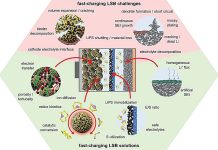
Solar power has become a significant source of renewable energy in Australia, with millions of homes equipped with rooftop solar panels.
However, an alarming issue looms over the industry: approximately 90% of these panels may end up in landfills once they reach the end of their lifespan.
To address this challenge, solar experts from UNSW Sydney are advocating for bespoke recycling technology that can efficiently extract and reuse the valuable elements within solar panels.
By adopting a “Reduce, Reuse, and Recycle” approach, the sustainability of solar energy can be improved, ensuring a greener future.
As the popularity of solar energy grows, there is a surge in both small-scale and large-scale deployments of solar panels worldwide.
However, the lifespan of these panels is typically around 25 to 30 years, meaning that many systems installed over 15 years ago will soon require replacement. Unfortunately, there is also a rising trend of prematurely replacing perfectly functional panels.
This leads to a concerning amount of waste, with an estimated 145,000 tons of PV panel waste projected in Australia by 2030. To address this issue, the experts emphasize the importance of recycling PV modules instead of sending them to landfills.
Solar panels contain valuable materials that can be recycled, including silicon, aluminum frames, and silver.
In the current recycling process, panels are shredded into smaller pieces and down-cycled into other products, such as construction bricks or roadbase.
However, the challenge lies in extracting rare metals from the panels while keeping costs down. Separating and purifying the components for reuse is a complex task.
The researchers are striving to develop cost-effective methods to extract valuable materials like silver, which is highly sought-after.
By enhancing the recycling process, the industry can minimize waste and conserve valuable resources.
The management and disposal of PV modules vary across different states and territories in Australia. While some regions have implemented policies to prevent panels from ending up in landfills, others still lack such regulations.
Disposing of panels in landfills not only harms the environment but also contributes to the depletion of essential resources. To incentivize manufacturers to invest in better recycling technology, the experts propose a shared responsibility approach.
They suggest implementing a system where the costs of recycling old modules are recouped from the industry, ensuring a sustainable future.
The lack of affordable testing to ensure panels meet electrical safety standards poses a challenge. Many homeowners prematurely upgrade their solar systems due to the absence of proper evaluation.
To address this issue, cheaper testing methods need to be developed so that panels that haven’t reached their full lifespan can be repaired or replaced, reducing unnecessary waste.
The experts highlight the need to learn from European countries that are at the forefront of PV recycling. By investing in recycling technology now, Australia can avoid a future waste crisis and create a sustainable solution for recycling PV modules.
As Australia’s solar power industry continues to expand, it is crucial to address the end-of-life management of PV modules.
Recycling technology tailored to solar panels can prevent valuable materials from going to waste and conserve essential resources.
By adopting responsible practices and implementing recycling schemes, the industry can minimize the environmental impact and pave the way for a brighter, sustainable future powered by solar energy.



